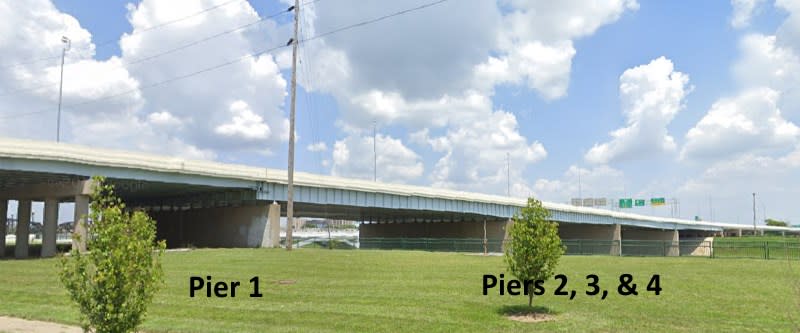Panars
Geotechnical
- Apr 18, 2005
- 298
For the second time in my career, I have run across an existing bridge pier foundation that consists of a concrete footing with sheet piling around the perimeter. It looks like a normal pile supported pier footing, except there are no piles (like H-piles or pipe piles) under the footing, just the sheet piles around the perimeter. The sheet piles are driven in a rectangle and then the concrete footing is poured inside the sheet piles. The footing is a normal thickness (like 3 to 5 ft, 1 to 1.5 m) and is at the top of the sheet pile.
Does anyone have an idea how they designed these foundations? Are they designed as spread footings with an effective depth 2/3 the depth of the sheet piling (similar to a pile group)?
I don't think the sheet piling could be taking any significant load because the connection between the sheet piling and the concrete footing is relatively small. The connection is probably enough to provide lateral restraint to the top of the sheet piling, but that is it.
Does anyone have an idea how they designed these foundations? Are they designed as spread footings with an effective depth 2/3 the depth of the sheet piling (similar to a pile group)?
I don't think the sheet piling could be taking any significant load because the connection between the sheet piling and the concrete footing is relatively small. The connection is probably enough to provide lateral restraint to the top of the sheet piling, but that is it.


![[idea] [idea] [idea]](/data/assets/smilies/idea.gif)
![[noevil] [noevil] [noevil]](/data/assets/smilies/noevil.gif)